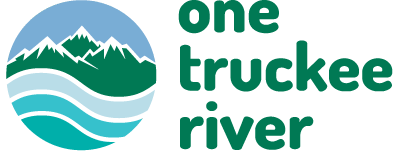Calling All Pollinators: 5 Tips to Increase Pollinator Habitat in Your Yard
“Think globally, act locally.”
This popular phrase, first coined by Scottish city planner and conservationist Patrick Geddes in 1915, could not be more germane to these times we are living in. Flip on the news and you will undoubtedly learn of the latest environmental catastrophe and its negative impacts: from hurricanes and tornadoes to wildfires and droughts. It can be overwhelming, to say the least, and can leave one feeling hopeless and helpless when it comes to “saving the environment.”
But Geddes was on to something, all those many years ago; if we can focus on making small changes for the better just outside our doors, we won’t feel so bogged down by the big stuff. There’s a lot we can do– just in our own yards in fact– that will have lasting beneficial impacts far beyond our living spaces. Creating or increasing habitat for pollinators is one of the most powerful (and empowering) things one can do to “act locally.”
Photo Credits (left to right): @Myriams-fotos(Pixabay.com), Ronny Overhate, Veronika Andrews Caption: A bee pollinating a flower, two butterflies resting, a rufous hummingbird pollinating a monarda plant.
Why care about pollinators?
As a keystone species, pollinators act as the glue that holds an ecosystem together. Without them, that system would suffer, shrinking the biodiversity around us. Here’s just a few things they provide:
They provide pollination services for over 85% of the world’s flowering plants.
Two-thirds of the world’s crop species depend on pollinators. The United States alone grows more than 100 crops that either need or benefit from pollinators.
The economic value of these native pollinators is estimated at $3 billion per year in the U.S. (Xerces Society).
So before you decide to throw in the towel and replace all of your current landscaping with rock mulch and decomposed granite in an effort to conserve water for the greater good, please consider these options. Here are 5 simple tips to boost the ecology in your yard, and, the world around you:
Photo Credit: Carrie Jensen Caption: This local Truckee Meadows landscape highlights water-wise and pollinator-friendly plants.
Tip #1: Plan(t) for Wildlife:
Add perennials and shrubs that attract butterflies, bees, insects and birds (natives are best!). See our Pollinator Plant List: https://drive.google.com/file/d/1289hCoKNIuBRfA5a7s5IoJdFzSLH2fVa/view?usp=sharing
Add groundcovers and low shrubs to create habitat for birds and cool soils for insects in the soil
Plant a diversity of species, and plant generously– mass plantings can actually save water in the long run, and can cut down “travel time” for pollinators between plants
Tip #2: Shrink Your Lawn
“Every square foot dedicated to lawn is a square foot that is degrading local ecosystems.” (Tallamy) While lawns make fun places for us to play on, they don’t provide much for pollinators. “By shrinking your lawn and incorporating more plantings or pathways, you will not only save water, but provide more habitat for wildlife that can enhance your yard.”
Tip #3: Limit Light Pollution
Consider turning off your lights at night.” Research is showing that our porch and security lights are major causes of insect decline.” (Tallamy)
Or use motion sensor security lights that light up only when an intruder enters your yard.
If nothing else, replace the white bulb in your lights with yellow tinted bulbs (yellow LED bulbs are the best). Yellow wavelengths are the least attractive to nocturnal insects.” (Tallamy)
Tip #4: Reduce Chemical Pesticides and Fertilizers:
Always use Integrated Pest Management to reduce the need for chemicals
If you need to use a chemical, there are many biocontrols and fertilizers available to us that are less harmful to beneficial insects and local waterways.
For example, compost and other organic fertilizers may have lower rates of nitrogen and phosphorus, which can cause algae blooms. For further information and research on organic fertilizers, see https://www.omri.org/.
Also avoid neonicotinoid insecticides, which research has found to have negative effects on beneficial insects. For more info: https://xerces.org/pesticides/understanding-neonicotinoids
Photo Credit: Dean Moriarty (Pixabay.com)
Tip #5: Spread the Word!
Telling your friends, family and neighbors about the importance of pollinators and what we can do to support them can have a profound impact.
Follow these links to sign the Bee-Friendly Reno pledge and learn more about what we can do to bring back our pollinator population Bring Back the Pollinators | Xerces Society.
And share the simple tips listed in this blog post! (Click the social icons below to share this post.)
Resources:
National Library of Scotland, https://www.nls.uk/learning-zone/politics-and-society/patrick-geddes/
Xerces Society, https://www.xerces.org/
Tallamy, Homegrown National Park: https://homegrownnationalpark.org/
Nevada Bugs and Butterflies: https://www.facebook.com/NevadaBugsAndButterflies






